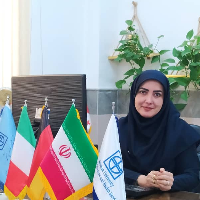The Relationship between Usage Rate of Information and Communication Technology and Demographic Features of Faculty Members of Ferdowsi University of Mashhad
Author(s):
Abstract:
The present paper investigates the relationship between usage rate of information and communication technology and demographic features of faculty members of Ferdowsi Mashhad (FUM). Questionnaire and interview were used as data collection tools. 274 faculty members of Ferdowsi University of Mashhad were selected as our research population. Findings show that regarding the relationship between gender of fac and usage rate of information and communication technology, average use of ICT, Internet and Internet services it was found that the usage rate of ICT with respect to educational performances was higher among women than men and usage ra than women. There is a negative (inverse) relationship between the age of faculty members. On average, regarding the usage rate of ICT, there is a significant difference between passed courses (preliminary, intermedium, advanced, experimental) in ICT. Also there is no significant difference at different scientific levels (instructor, educator, assistant professor, associate professor and full professor) and values obtained for different service records of faculty members of FUM. Home and workplace were referred more as the places for use of ICT and slow rate of connection to the network were mentioned as the most important problems in the usage.
Language:
Persian
Published:
Journal of Information Processing and Management, Volume:26 Issue: 2, 2011
Page:
335
https://magiran.com/p871288
مقالات دیگری از این نویسنده (گان)
-
The Effect of Performing a Flipped Learning Pattern (FLP) on Desire for Learning, Self-control, and Self-Management of Students
*, Khadijeh Aliabadi, Esmaeil Zaraii Zavaraki
Educational Psychology, -
The Effect of Problem-Solving Teaching through A Flipped-Learning Pattern on the Capability of Problem-Solving Styles of Students of Mashhad University of Medical Sciences
, Khadijeh Aliabadi, Ismaiil Zaraii Zavaraki, Ali Delavar
Iranian Journal of Medical Education,



